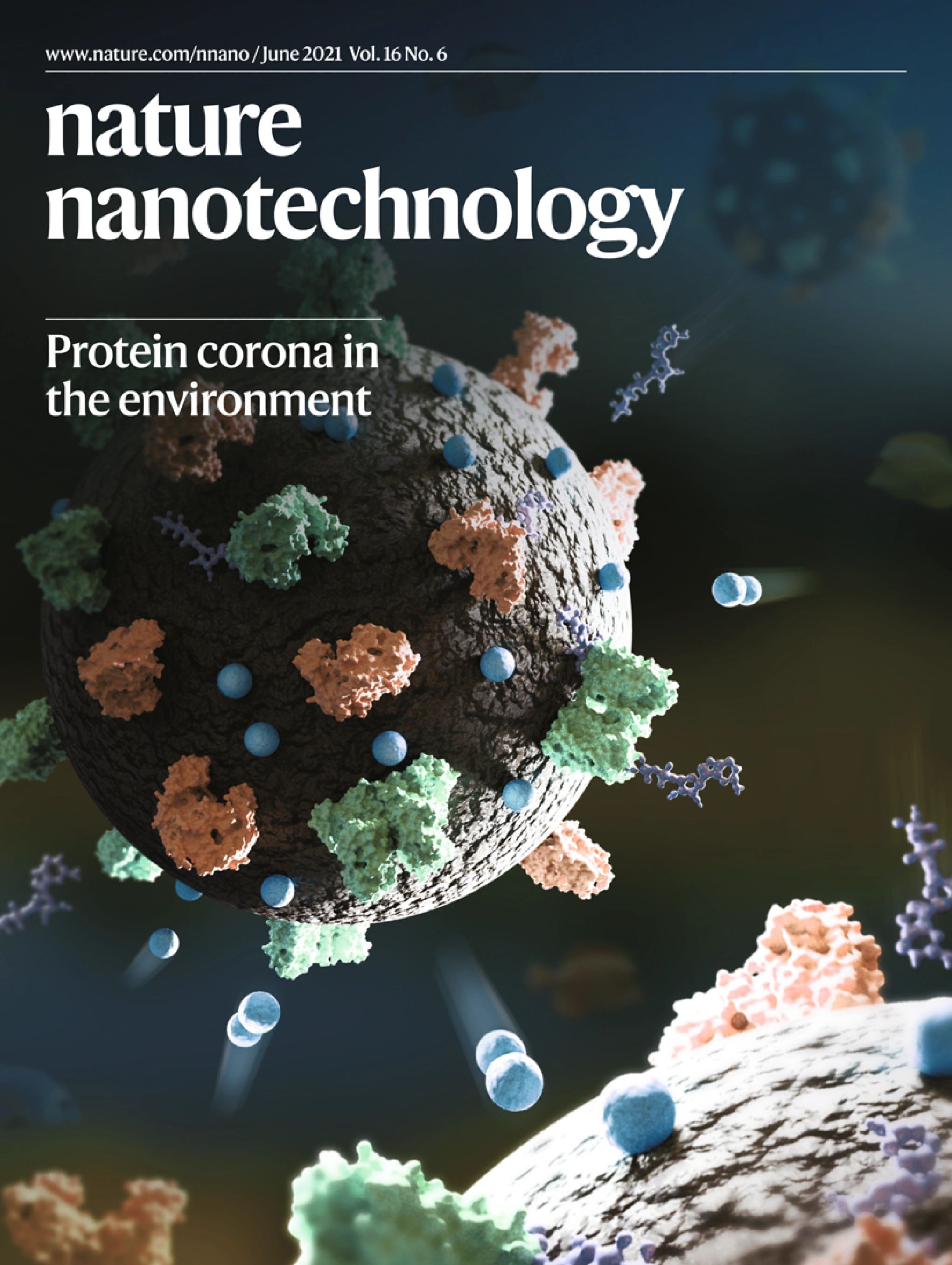
Title: Environmental dimensions of the protein corona
Abstract: The adsorption of biomolecules to the surface of engineered nanomaterials, known as corona formation, defines their biological identity by altering their surface properties and transforming the physical, chemical and biological characteristics of the particles. In the first decade since the term protein corona was coined, studies have focused primarily on biomedical applications and human toxicity. The relevance of the environmental dimensions of the protein corona is still emerging. Often referred to as the eco-corona, a biomolecular coating forms upon nanomaterials as they enter the environment and may include proteins, as well as a diverse array of other biomolecules such as metabolites from cellular activity and/or natural organic matter. Proteins remain central in studies of eco-coronas because of the ease of monitoring and structurally characterizing proteins, as well as their crucial role in receptor engagement and signalling. The proteins within the eco-corona are optimal targets to establish the biophysicochemical principles of corona formation and transformation, as well as downstream impacts on nanomaterial uptake, distribution and impacts on the environment. Moreover, proteins appear to impart a biological identity, leading to cellular or organismal recognition of nanomaterials, a unique characteristic compared with natural organic matter. We contrast insights into protein corona formation from clinical samples with those in environmentally relevant systems. Principles specific to the environment are also explored to gain insights into the dynamics of interaction with or replacement by other biomolecules, including changes during trophic transfer and ecotoxicity. With many challenges remaining, we also highlight key opportunities for method development and impactful systems on which to focus the next phase of eco-corona studies. By interrogating these environmental dimensions of the protein corona, we offer a perspective on how mechanistic insights into protein coronas in the environment can lead to more sustainable, environmentally safe nanomaterials, as well as enhancing the efficacy of nanomaterials used in remediation and in the agri-food sector.